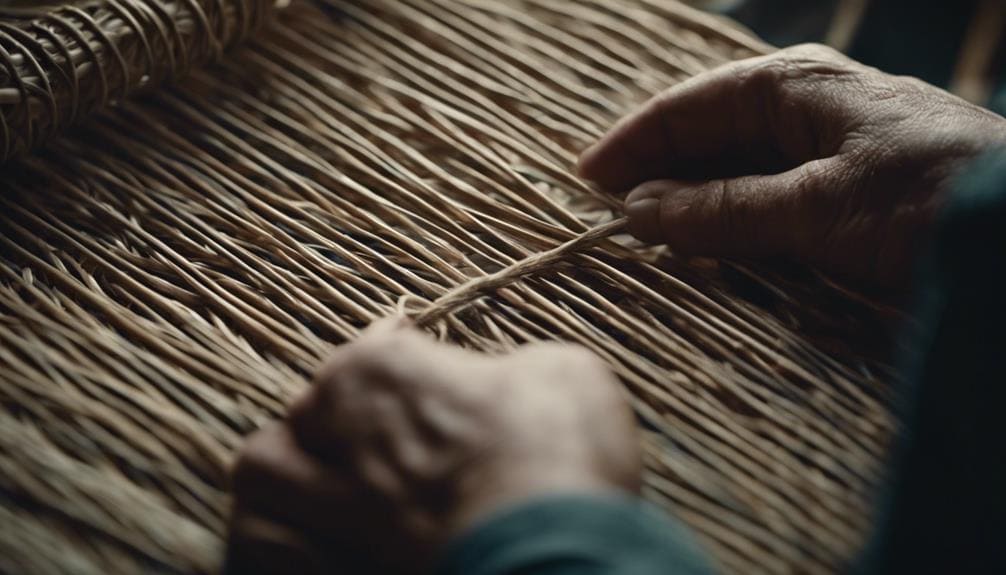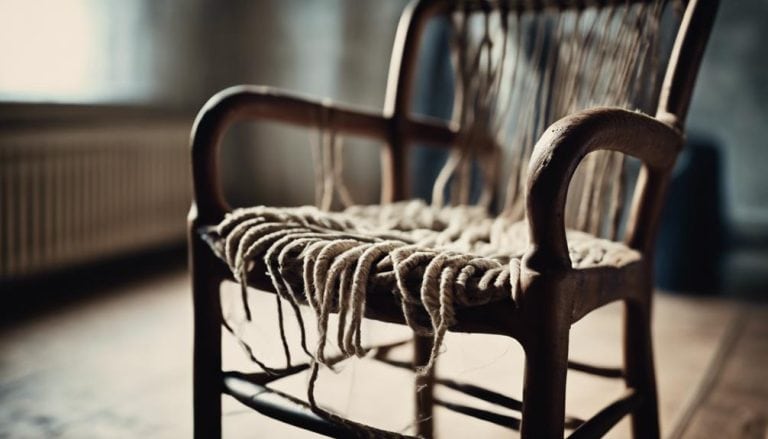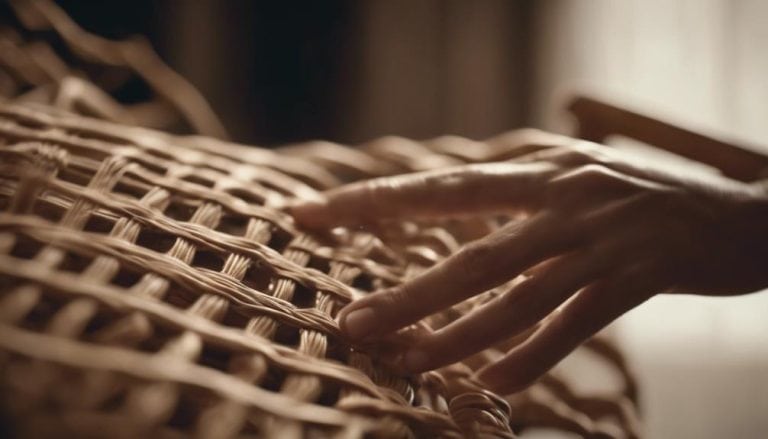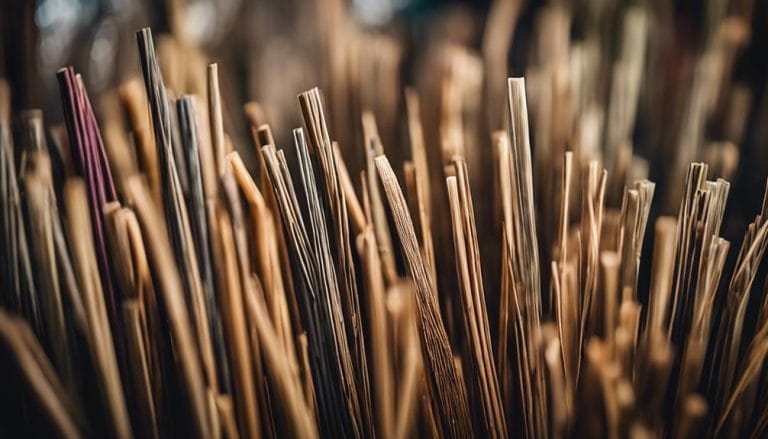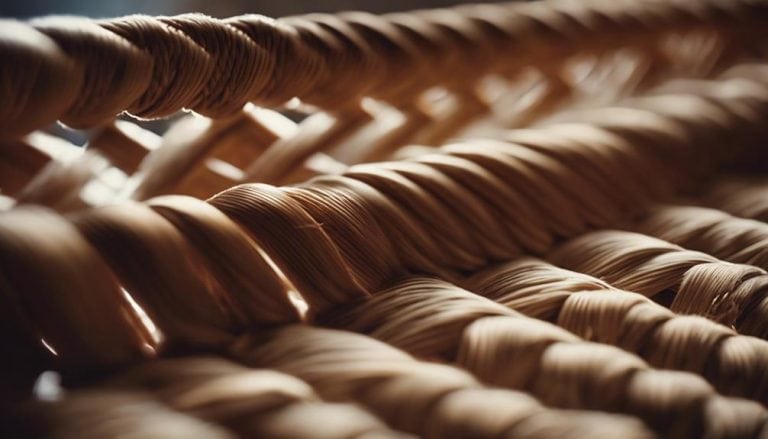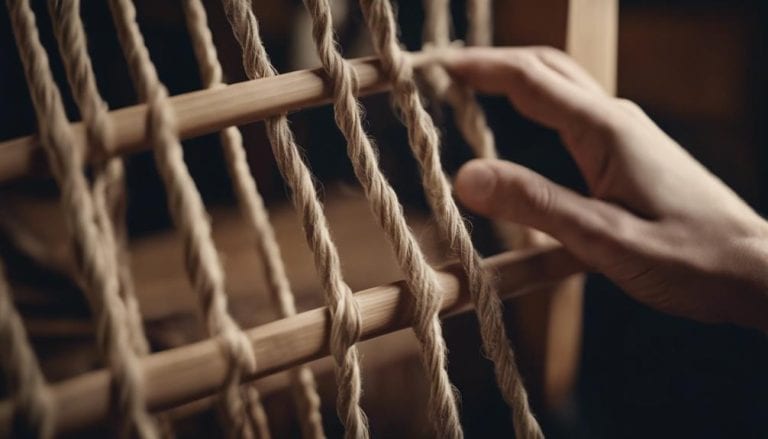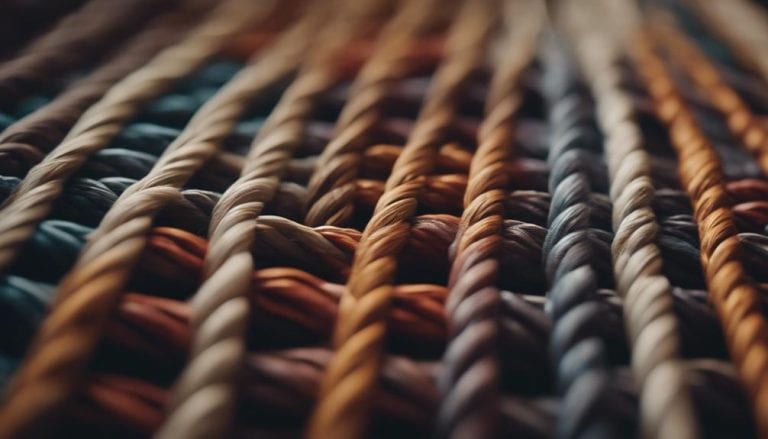Rattan Cane Vs. Danish Cord Crafting
As the saying goes, ‘Old ways won’t open new doors.’ Regarding chair caning, the choice between rattan cane and Danish cord crafting can significantly impact a piece of furniture’s final look and feel. Each method has unique characteristics, influencing not only aesthetics but also durability and craftsmanship.
While both techniques have strengths, understanding the nuances between rattan cane and Danish cord crafting is essential for anyone looking to elevate their furniture-making skills and create pieces that will last.
When comparing Rattan Cane and Danish Cord crafting, consider the durability and flexibility of Rattan Cane versus the sleek, modern look. Each material offers unique qualities for crafting furniture and decor.
Key Takeaways
- Rattan Cane offers a natural and rustic charm with strength and durability.
- Danish Cord provides a modern aesthetic with minimal maintenance and customization options.
- Both materials contribute to furniture making with unique styles and durability features.
- Consider style, setting, and intended use when choosing between Rattan Cane and Danish Cord.
Characteristics of Rattan Cane Crafting
Crafting with rattan cane embodies a harmonious blend of nature’s resilience and artisanal intricacy, creating furniture pieces that exude timeless charm and functionality. Rattan cane, a natural material from rattan palms, is known for its strength and flexibility, making it ideal for intricate weaving techniques in chair seating. The herringbone twill pattern, a hallmark of rattan cane craftsmanship, showcases the artisan’s skill and attention to detail.
From rush seating to hand caning, each method contributes to the structural integrity of the final piece, ensuring museum-quality standards. The weaving techniques in working with rattan cane require precision and expertise to achieve beauty and durability.
The organic texture and color variations of rattan cane add a rustic elegance to furniture, making it a popular choice for indoor and outdoor settings. Embracing the artistry of rattan cane crafting results in visually stunning pieces and furniture that stands the test of time with grace and sophistication.
Advantages of Danish Cord Crafting
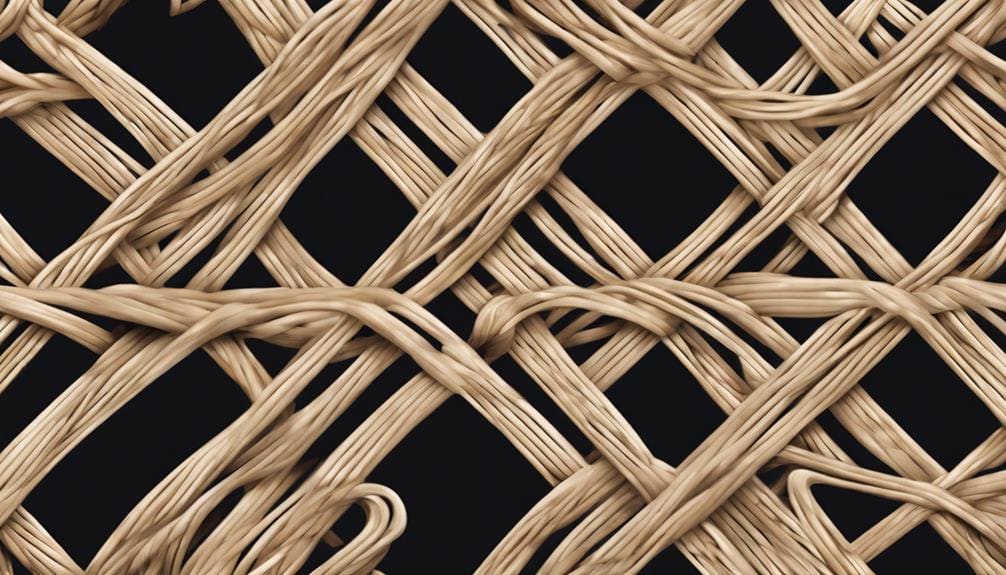
An essential feature of Danish cord crafting is its exceptional durability, which is derived from the utilization of a three-ply twisted paper cord. The weaving process involves pairs of cords woven from front to back, enhancing the strength of the final product.
Pioneered by designer Hans Wegner in the 1940s, Danish cord crafting offers a unique aesthetic appeal and remarkable sturdiness. Maintenance of Danish cord seats is minimal, requiring only occasional vacuuming to preserve their pristine look.
Additionally, the cost-effectiveness of re-cording Danish dining chairs, typically $175 to $300, makes this crafting technique a practical and long-lasting choice for those seeking style and durability.
- Exceptional durability from three-ply twisted paper cord
- Pairs of cords woven for added strength
- Minimal maintenance with occasional vacuuming
- Cost-effective re-cording of Danish dining chairs
- Long-lasting seating solution
Aesthetics: Rattan Cane Vs Danish Cord
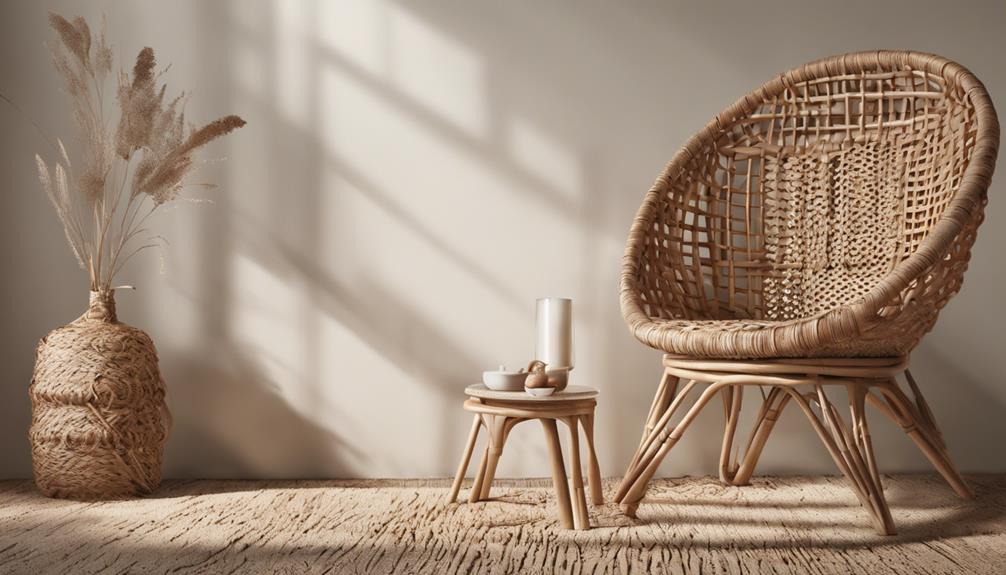
With the focus shifting to the aesthetics of Rattan Cane versus Danish Cord, these two materials’ visual appeal and design essence come to the forefront in furniture crafting. Rattan cane emanates a natural and rustic charm, ideal for tropical and bohemian decor. At the same time, Danish cord exudes a modern and sleek vibe, favored in mid-century modern and contemporary interiors.
The intricate weaving pattern of rattan cane adds texture and depth to chairs, embodying a traditional and timeless allure. In contrast, Danish cord’s minimalist and Scandinavian design aesthetic emphasizes clean lines and functionality, perfectly suited for a sleek and contemporary look.
Rattan cane allows for versatile designs and patterns, while Danish cord’s simplicity highlights the beauty of geometric shapes. Whether you prefer the warmth of rattan cane or the sleekness of Danish cord, both materials offer unique ways to enhance furniture with their distinct visual characteristics.
Applications in Furniture Making
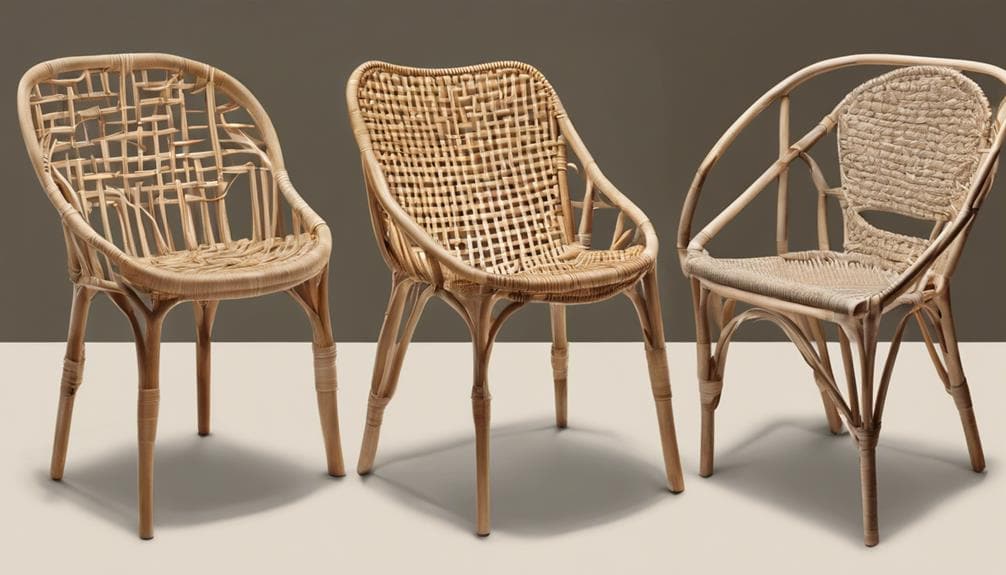
In furniture making, rattan cane and Danish cord are versatile materials known for their distinct textures and design aesthetics. Rattan cane is commonly used for chair caning, adding durability and flexibility to traditional pieces. On the other hand, Danish cord, woven by hand, is often found in Danish chairs. Its twisted paper composition offers a modern twist.
When it comes to seat weaving, rattan cane is meticulously woven in intricate patterns, enhancing the classic appeal of Scandinavian furniture. In contrast, Danish cord utilizes a 2-ply lacing technique to create a basket weave pattern, a hallmark of mid-century Danish modern design. Both materials provide opportunities for creativity in furniture crafting, combining the classic touch of rattan cane with the contemporary flair of Danish cord.
Durability Comparison: Rattan Vs Cord
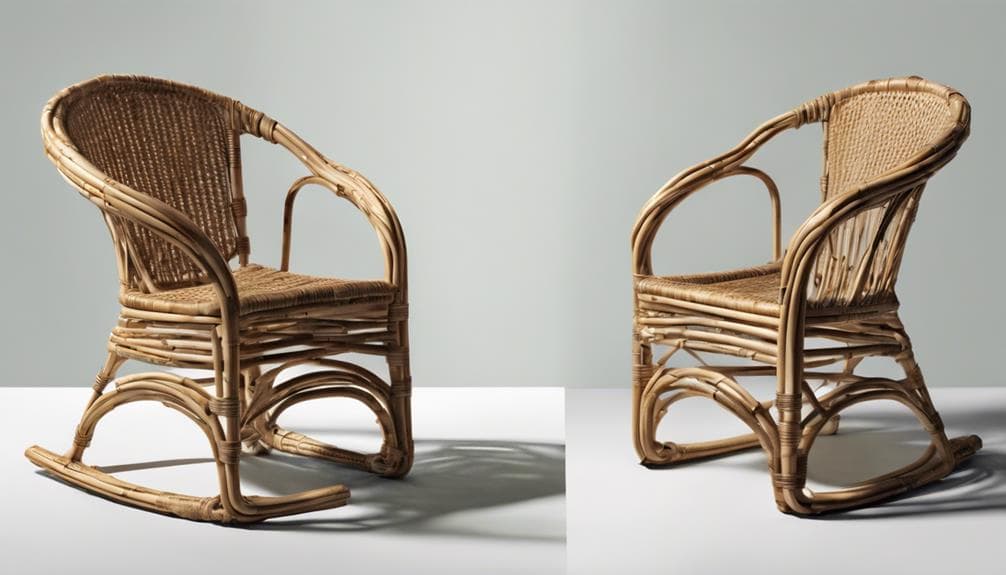
Comparing the durability of rattan cane and Danish cord in furniture crafting reveals nuanced differences in their resilience and longevity. Rattan cane, known for its robust nature, excels in heavy daily use scenarios. Its natural properties allow it to withstand weight and pressure without compromising its shape or stability, making it a durable choice for furniture construction.
On the other hand, Danish cord, crafted from twisted paper cord, provides strength and resilience ideal for seating surfaces in modern designs, particularly Scandinavian-style furniture. The weaving techniques employed in Danish cord production ensure longevity and comfort, enhancing its durability in seating applications.
While both materials offer durability, rattan cane may demand less maintenance over time than Danish cord, making it a practical choice for those seeking long-lasting furniture that combine strength and aesthetic appeal.
Choosing Between Rattan and Danish Cord
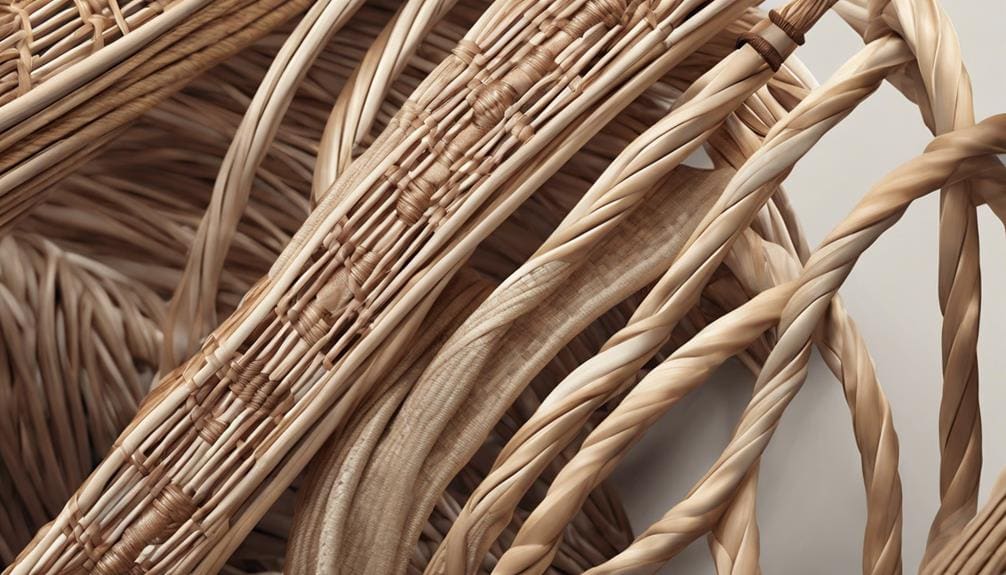
When deciding between rattan cane and Danish cord for furniture crafting, one must carefully consider the piece’s desired aesthetic, maintenance requirements, and intended use.
- Rattan cane: Offers a traditional look with a natural texture and is suitable for outdoor furniture.
- Danish cord: Provides a sleek modern aesthetic, primarily used for indoor seating like dining chairs.
- Customization: Danish cord comes in various colors and sizes, allowing for personalized touches.
- Durability: Rattan cane is durable for outdoor use, while Danish cord is more suited to indoor settings.
- Aesthetic: Consider the style and overall aesthetic preference when choosing between rattan cane and Danish cord.
Choosing between rattan cane and Danish cord involves more than just the material itself; it’s about understanding the design, functionality, and visual impact of the furniture piece. Whether you lean towards the traditional warmth of rattan or the contemporary appeal of Danish cord, your decision should align with the intended purpose and style of the furniture you’re crafting.
Frequently Asked Questions
What Is the Best Cord for Seat Weaving?
For seat weaving, rattan cane offers exceptional durability and versatility, allowing intricate designs. On the other hand, Danish cord provides modern aesthetics with customization options. Rattan’s strength and classic look make it a top choice.
What Are the Different Types of Danish Cord Weaving?
I explore the art of Danish cord weaving, embracing traditional patterns and modern techniques. From vibrant color options to essential tools, beginner tips to advanced designs, maintenance musts, and sustainability benefits, I revel in the historical significance and endless customization options.
What Is the Best Material for Weaving Outdoor Chairs?
For weaving outdoor chairs, consider the best material based on durability, weather resistance, aesthetic appeal, and maintenance. Rattan offers traditional charm and durability, while Danish cord provides a modern look with strength and unique design possibilities.
What Is the Difference Between Laced and Unlaced Danish Cord?
I appreciate the elegance of laced Danish cord, showcasing traditional techniques with intricate patterns. On the other hand, unlaced Danish cord offers a modern touch that is seamless and sleek. The choice depends on the desired aesthetic, skill level, and customization options.
Conclusion
After comparing rattan cane and Danish cord crafting, it’s clear that both techniques have their unique advantages and aesthetics. While rattan cane offers a rustic charm, Danish cord crafting showcases intricate patterns. When deciding between the two, consider the style and durability you desire. Ultimately, the choice between rattan cane and Danish cord crafting is like comparing apples and oranges – both have their appeal; it just depends on your taste and needs.

